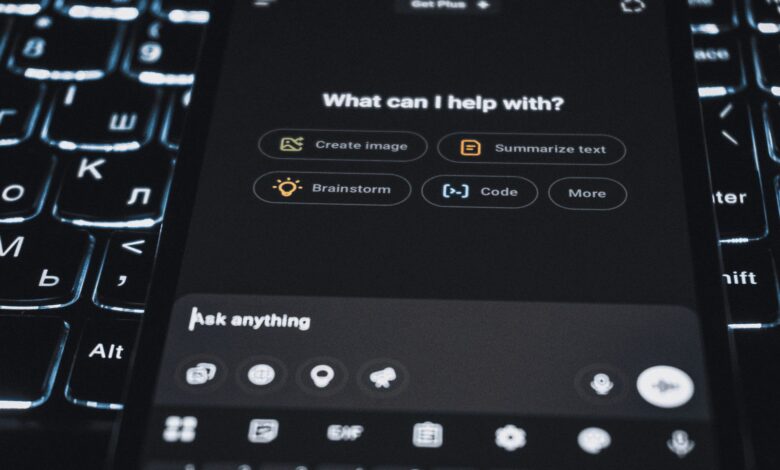
Let’s get one thing out of the way: AI isn’t going to kill the agency model.
But it’s already killing the old one.
You can feel it. Clients are shifting. Expectations are changing. Budgets are being scrutinised like never before, not just for efficiency, but for effectiveness. The agencies that survive this shift won’t be the ones with the flashiest decks. They’ll be the ones that can embed AI into how they think, work and deliver and prove real value, fast.
The traditional model? It’s done. The creative → design → media → traffic → report conveyor belt no longer stacks up. Especially when a junior with the right AI tools can do in a day what used to take a week.
The good news? This isn’t the end of agencies. It’s just the end of those refusing to evolve.
The Time-Sheet Era Isn’t fit for purpose
Let’s talk about time-based billing.
When AI lets you turn around campaign assets, reporting, or even strategy outlines in a fraction of the time – how do you justify billing by the hour?
You don’t.
Instead, agencies need to shift to value-based pricing: packaging insight, automation, and strategy into outcomes that justify the spend. That means productising IP. Charging for frameworks, forecasting tools, or market intelligence that helps a client make smarter decisions. And letting AI handle the heavy lifting underneath.
The future isn’t about time. It’s about impact.
AI Is Rewriting the Rules of Delivery
There’s still a belief in some corners that AI is “coming for our jobs.” It really is. At first, AI is coming for your workflows – and the bloated, inefficient, hard-to-scale models too many agencies still operate.
Here’s what AI’s already optimising:
- Content production (multiple versions, tested at speed)
- Media planning (predictive analytics, mix modelling)
- Reporting (automated dashboards, competitor tracking)
- Operations (resourcing, time tracking, pricing recommendations)
- Pitching (faster proposals, smarter creative hooks)
Used right, AI is a multiplier! Not a threat. But only if it’s actually embedded into how you work, not just bolted on as a shiny tool to tick the innovation box.
You Can’t Buy Your Way Into Relevance
Let’s address the holding companies.
Every year: another acquisition, another press release promising “transformation” and “synergies.” And yet 12 months later, we see leadership turnover, siloed teams, diluted propositions, and discounted goodwill in the annual report.
Why? They are panicking about their future and the challenger independent agencies are coming for them fast and it’s becoming harder to fulfil their clients needs with the extremely diversified media buying landscape. A reaction to pressure, not a play for leadership.
We Don’t Need A Bigger Network. We Need a System.
If I were building from scratch today, I wouldn’t start with a holding group. I’d start with a system. One built around technology, operational maturity, AI-enabled workflows, and measurable outcomes.
Here’s what it looks like:
- One strong, digitally native anchor agency that does the job of a creative agency AND a media agency. I never understood why these two were split.
- Strong account teams that understand their clients needs
- Modular capabilities stacked by strategy, media, CX, and analytics
- Specialisms in the various online platforms – not generalists who don’t understand all the levers that make a difference.
- A shared operating layer – finance, pricing, delivery, tooling
- Founders kept close, not bought out or sidelined
- AI embedded across content, planning, insights and ops
- Internal IP turned into productised services – dashboards, frameworks, GTM kits
That’s not a theory. It’s the blueprint agencies need to survive what’s coming – and what’s already here.
Talent Wants Meaning. Clients Want Clarity. AI Enables Both.
We’re also seeing a generational shift in what talent wants. Burnout is real. Bloat is exhausting. People want to do great work without drowning in admin, silos, or bureaucracy.
AI, when integrated properly, lets you strip out the noise. Free up the thinkers. Create space for creativity and momentum.
At the same time, clients aren’t asking for more PowerPoint. They want speed, clarity, and outcomes. They don’t care what department delivers – they care if it works.
Smart agencies will build one interface that offers:
- Modular services
- Integrated reporting
- Consistent delivery standards
- Sector-specific fluency
In short: clear input, measurable output.
Final Thought: The Window Is Now
There’s a window right now — maybe 12 to 18 months — where agencies can get this right. After that, it’s not just about evolving. It’s about catching up to those who already did.
The question isn’t “Will AI replace agencies?”
The real question is: Are agencies willing to replace the parts of themselves that AI makes obsolete?
If the answer’s yes and if we stop chasing old models and start building new systems – agencies don’t just survive. They lead.
Let’s make that the goal.



